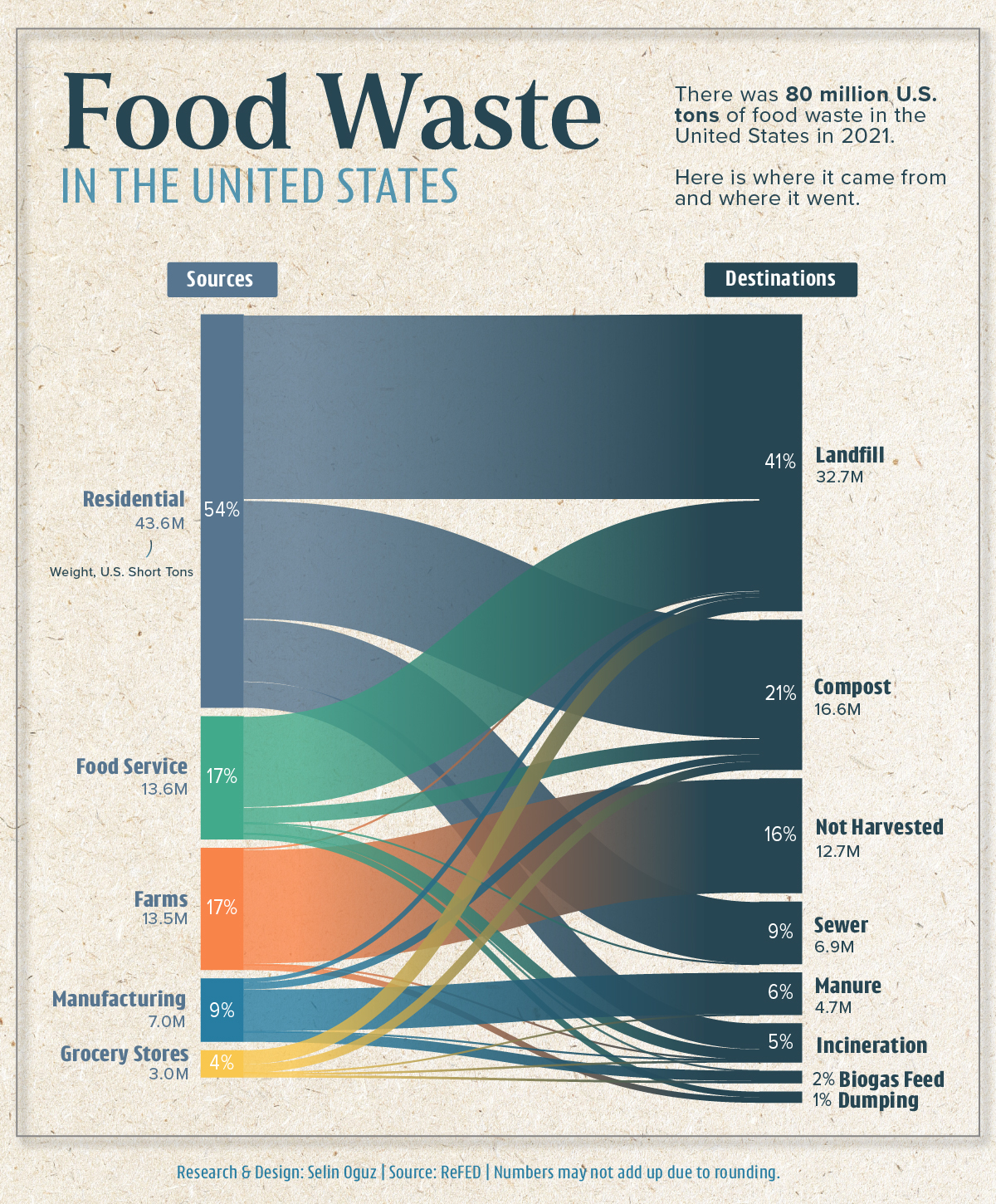![]()
See this visualization first on the Voronoi app.

Visualized: Food Waste in the United States
This was originally posted on the Voronoi app. Download the app for free on iOS or Android and discover incredible data-driven charts from a variety of trusted sources.
Did you know that there is more than 80 million tons of food wasted in the U.S. every year?
To explore where this waste came from and where it went, this graphic by Selin Oğuz visualizes the flow of food waste in the U.S. in 2021 using data from ReFED.
Following Waste from Source to Destination
The biggest source of food waste in the U.S. stemmed from residential households in 2021, accounting for more than 50% of the total.
Farms and the food service industry followed, each accounting for more than 13 million U.S. tons (short tons) of food waste in the same year.
| Sources | Weight, U.S. Short Tons | Share of Total |
|---|---|---|
| Residential | 43.6M | 54.0% |
| Food Service | 13.6M | 16.9% |
| Farm | 13.5M | 16.7% |
| Manufacturing | 7.02M | 8.7% |
| Retail | 3.01M | 3.8% |
| Total | 80.73M | 100% |
But where did all of this food waste end up?
The data shows us that the answer is primarily landfills, followed by compost and being left unharvested, which occurs due to reasons such as market variability, insufficient labor, or food safety concerns.
What Food Waste Means for the Environment
Whether it’s as a result of spoilage, poor planning, or unrealistic cosmetic standards for produce, food waste squanders valuable resources—such as water, energy, and labor—and intensifies global hunger and food insecurity, according to the United Nations.
Food waste is also a huge source of greenhouse gas (GHG) emissions, contributing to climate change. According to the U.S. Environmental Protection Agency, an estimated 190 million U.S. tons of GHG emissions result from food waste annually.
To put that number into perspective, that is equivalent to the annual emissions of 42 coal power plants.
Overall, the data highlights that food waste occurs at every stage of the food supply chain. Reducing this waste, especially where it is prominently high, can be crucial in achieving food system sustainability in the U.S. and beyond.
The post Visualized: Food Waste in the United States appeared first on Visual Capitalist.